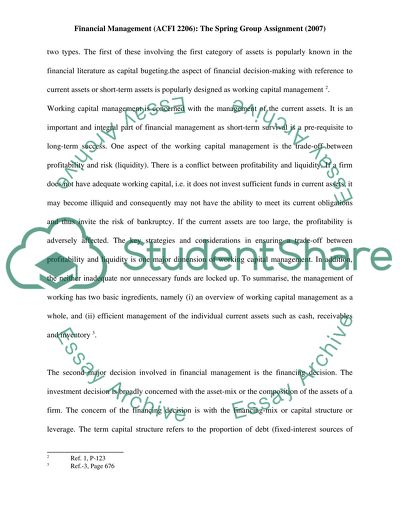Cite this document
(“Financial Management - The Spring Group Assignment Essay”, n.d.)
Financial Management - The Spring Group Assignment Essay. Retrieved from https://studentshare.org/miscellaneous/1506048-financial-management-the-spring-group-assignment
Financial Management - The Spring Group Assignment Essay. Retrieved from https://studentshare.org/miscellaneous/1506048-financial-management-the-spring-group-assignment
(Financial Management - The Spring Group Assignment Essay)
Financial Management - The Spring Group Assignment Essay. https://studentshare.org/miscellaneous/1506048-financial-management-the-spring-group-assignment.
Financial Management - The Spring Group Assignment Essay. https://studentshare.org/miscellaneous/1506048-financial-management-the-spring-group-assignment.
“Financial Management - The Spring Group Assignment Essay”, n.d. https://studentshare.org/miscellaneous/1506048-financial-management-the-spring-group-assignment.


